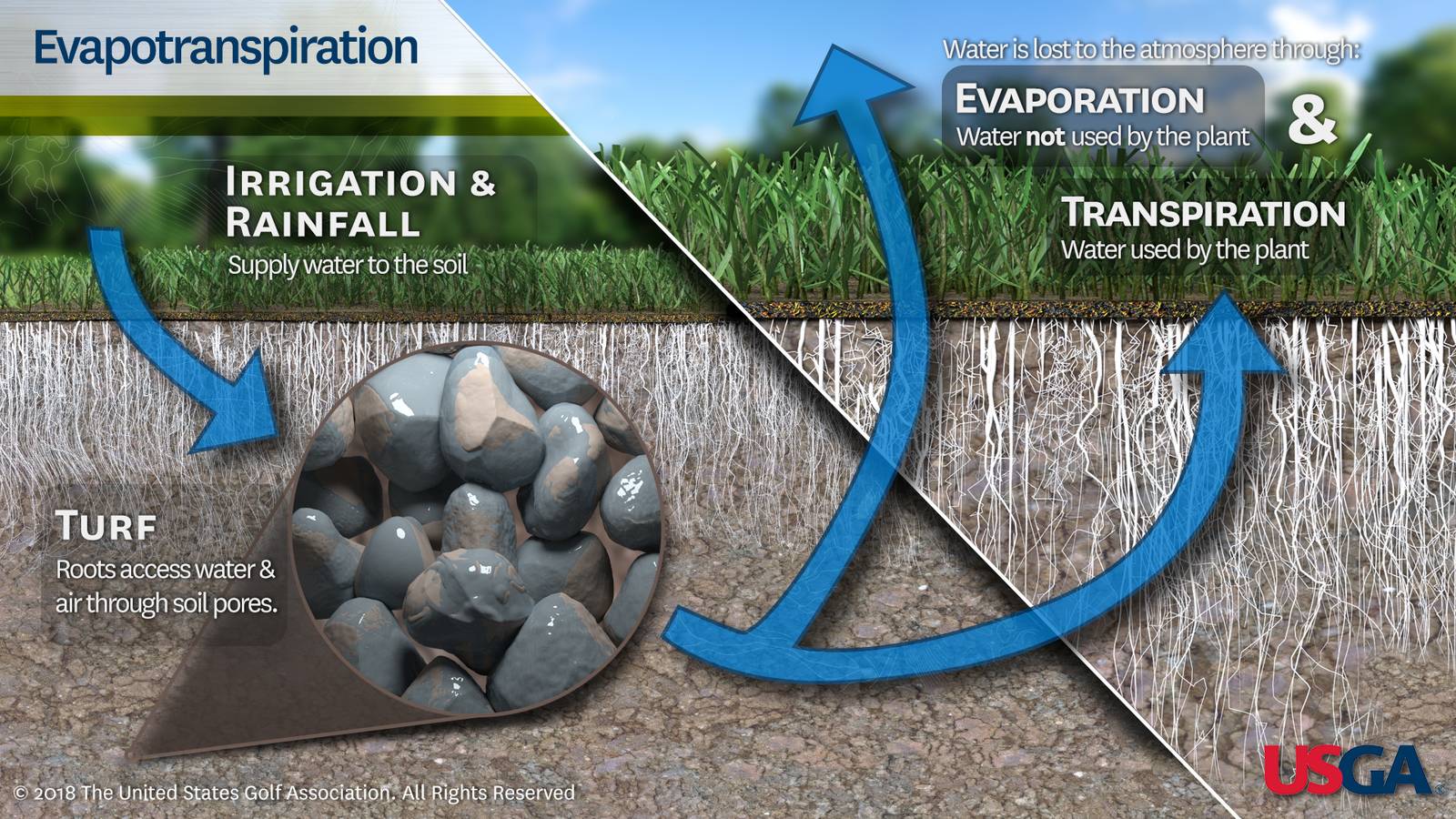Six Interesting Facts About Water And Turf

This image is originally posted and taken from Source
All living things need water to survive, including turf. Here are six interesting facts about water and how turf uses this precious commodity:
1. A grass plant is mostly water. The water content of turf generally ranges from 75 to 85 percent by weight.
2. Water is the primary mechanism for moving nutrients, organic compounds and gases into turf roots and throughout the plant. Approximately 1 to 3 percent of the water applied to turf is used by the plant.
3. Turf species vary widely in their water requirements. Typically, cool-season grasses such as Kentucky bluegrass and creeping bentgrass use 20 percent more water than warm-season grasses such as bermudagrass and seashore paspalum. Water use rates vary by month and are influenced by temperature, humidity, wind and solar radiation. Breeding grasses that use less water has been a primary objective of the USGA Turfgrass and Environmental Research Program for more than 40 years.
4. Water conducts heat, which is a characteristic that can help and hurt turf. A light mist of water on a hot day can draw excess heat out of turf leaves and cool the plants, much like sweat evaporating from a golfer’s skin. Too much water in the rootzone on a hot summer day can heat up the soil and damage the root system.
5. The effectiveness of water applications to turf is largely dependent on two main factors – the quality of the water and the quantity applied. Good quality water generally corresponds to good quality turf, but many grass species can also tolerate low-quality water such as recycled water. Applying the right quantity of water depends on irrigation system efficiency and the skill and experience of the superintendent.
6. Actively growing turf is one of nature’s best filters. Turf’s extensive root system and thatch layer creates an ecosystem that can filter and breakdown contaminants carried by water. This helps to protect the quality of groundwater and surface water.
This article is originally posted and taken from Source
